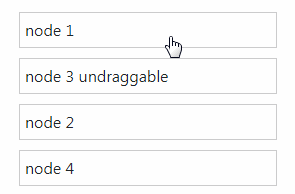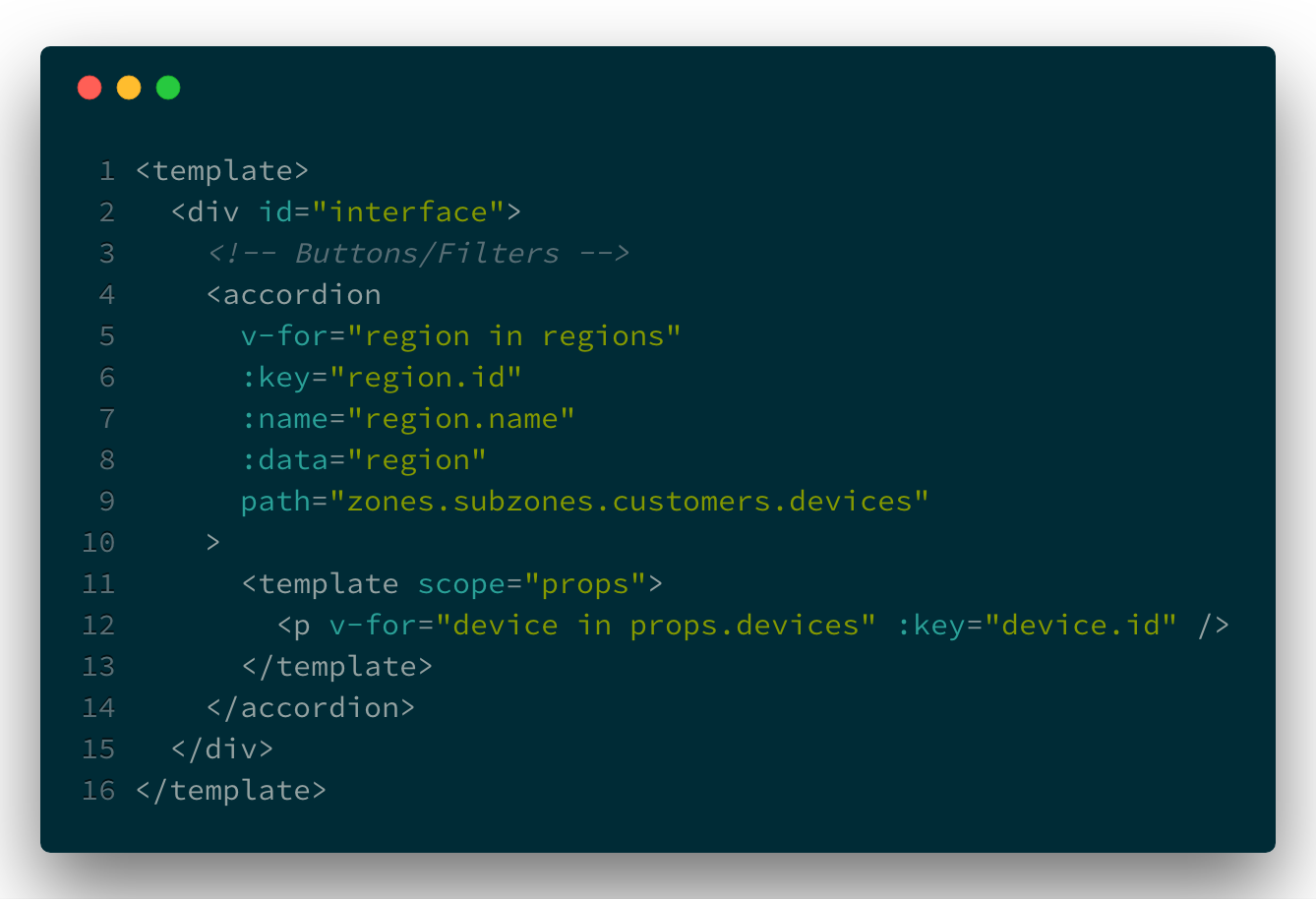Nested Slots Vue Js
- Nested Slots Vue Js Tutorial
- Nested Slots Vue Js Tool
- Nested Slots Vue Js 2.2
- Nested Slots Vue Js Login
You have an array or an object as a prop, and you want your app to do something whenever that data changes.
So you create a watcher for that property, but Vue doesn't seem to fire the watcher when the nested data changes.
Last week the version 2.6.0-beta.3 of Vue.js was released, enabling a new feature to simplify scoped slots even more. It introduces the new v-slot directive and its shorthand, as described in the RFC-0001 and RFC-0002. Vue.js (commonly referred to as Vue; pronounced / v j uː /, like 'view') is an open-source model–view–viewmodel front end JavaScript framework for building user interfaces and single-page applications. Vue, JavaScript Slots are a powerful tool for creating reusable components in Vue.js, though they aren’t the simplest feature to understand. Let’s take a look at how to use slots and some examples of how they can be used in your Vue applications. With the recent release of Vue 2.6, the syntax for using slots has been made more succinct. The official router for Vue.js. Note that nested paths that start with / will be treated as a root path. This allows you to leverage the component nesting without having to use a nested URL. Coming from the world of Twig and Latte (PHP templating engines), I was surprised that nested slots a. Tagged with vue.
Here's how you solve this.
You need to set deep to true when watching an array or object so that Vue knows that it should watch the nested data for changes.
I'll go into more detail on what this looks like in this article, plus some other useful things to know when using watch in Vue.
You can also check out the Vue docs on using watchers.
What we'll cover in this article
First we'll do a quick refresher on what a watcher actually is.
Second, we have to take a slight detour and clarify the distinction between computed props and watchers.
Thirdly, we'll dive into how you can watch nested data in arrays and objects. Feel free to skip straight here if you need — you can always come back to the first sections later on.
We'll also go through what you can do with immediate and handler fields on your watchers. This will take your watcher skills to the next level!
What is a watch method?
In Vue we can watch for when a property changes, and then do something in response to that change.
For example, if the prop colour changes, we can decide to log something to the console:
These watchers let us do all sorts of useful things.
But many times we use a watcher when all we needed was a computed prop.

Should you use watch or computed?
Watched props can often be confused with computed properties, because they operate in a similar way. It's even trickier to know when to use which one.
But I've come up with a good rule of thumb.
Watch is for side effects. If you need to change state you want to use a computed prop instead.
A side effect is anything that happens outside of your component, or anything asynchronous.
Common examples are:
- Fetching data
- Manipulating the DOM
- Using a browser API, such as local storage or audio playback
None of these things affect your component directly, so they are considered to be side effects.
If you aren't doing something like this, you'll probably want to use a computed prop. Computed props are really good for when you need to update a calculation in response to something else changing.
However, there are cases where you might want to use a watcher to update something in your data.
Sometimes it just doesn't make sense to make something a computed prop. If you have to update it from your <template> or from a method, it needs to go inside of your data. But then if you need to update it in response to a property changing, you need to use the watcher.
NOTE: Be careful with using a watch to update state. This means that both your component and the parent component are updating — directly or indirectly — the same state. This can get very ugly very fast.
Watching nested data — Arrays and Objects
So you've decided that you actually need a watcher.
But you're watching an array or an object, and it isn't working as you had expected.
What's going on here?
Let's say you set up an array with some values in it:
Now you update the array by pushing some more values into it:
Here's the question: has array changed?
Well, it's not that simple.
The contents of array have changed, but the variable array still points to the same Array object. The array container hasn't changed, but what is inside of the array has changed.
So when you watch an array or an object, Vue has no idea that you've changed what's inside that prop. You have to tell Vue that you want it to inspect inside of the prop when watching for changes.
You can do this by setting deep to true on your watcher and rearranging the handler function:
Nested Slots Vue Js Tutorial
Now Vue knows that it should also keep track of what's inside the prop when it's trying to detect changes.
What's up with the handler function though?

Just you wait, we'll get to that in a bit. But first let's cover something else that's important to know about Vue's watchers.
Immediate
A watcher will only fire when the prop's value changes, but we often need it to fire once on startup as well.
Nested Slots Vue Js Tool
Let's say we have a MovieData component, and it fetches data from the server based on what the movie prop is set to:
Now, this component will work wonderfully. Whenever we change the movie prop, our watcher will fire, and it will fetch the new data.
Except we have one small problem.
Our problem here is that when the page loads, movie will be set to some default value. But since the prop hasn't changed yet, the watcher isn't fired. This means that the data isn't loaded until we select a different movie.
So how do we get our watcher to fire immediately upon page load?
We set immediate to true, and move our handler function:
Okay, so now you've seen this handler function twice now. I think it's time to cover what that is.
Handler
Watchers in Vue let you specify three different properties:
Nested Slots Vue Js 2.2
immediatedeephandler
We just looked at the first two, and the third isn't too difficult either. You've probably already been using it without realizing it.
The property handler specifies the function that will be called when the watched prop changes.
Nested Slots Vue Js Login
What you've probably seen before is the shorthand that Vue lets us use if we don't need to specify immediate or deep. Instead of writing:
We can use the shorthand and just specify the function directly:
What's cool is that Vue also let's us use a String to name the method that handles the function. This is useful if we want to do something when two or more props change.
Using our movie component example, let's say we fetch data based on the movie prop as well as the actor, then this is what our methods and watchers would look like:
This makes things a little cleaner if we are watching multiple props to do the same side-effect.
If you enjoyed this article or have any comments, let me know by replying to this tweet!